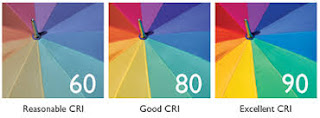Light & Vision
VISION
A simple definition of
LIGHT is visually perceived radiant energy. This visible light is a small part
of the ELECTROMAGNETIC SPECTRUM and ranges in wavelengths from 380 nm to 780
nm. Light is what energizes our visual system. Light reflected from
objects into our eyes enables us to see.Lightwaves
enter the human eye and send signals along the optic nerve.Light enters the eye
through the pupil, is focused on the retina, and is transmitted to our brain
via the optic nerve. A significant part of our brain is dedicated to the
processing of visual information.
Of all creatures on this
earth, the human visual system is the most impressive. Birds may have sharper
vision, felines may be more sensitive to motion, and horses may have almost a
360-degree field of view, but nothing can beat the combination of features
humans possess.
The human eye allows good
depth perception, excellent color perception, reasonable motion detection, and
great visual acuity.
PERCEPTION OF LIGHT
One of the misconceptions
about the perception of light is the fact that it is highly subjective. It is
impossible to prove that any two people see a particular object in exactly the
same way. This makes it a real challenge to scientifically measure certain
attributes of lighting such as color and quantity.
We all tend to think of an
object as having fixed colors. In reality, an object's appearance results from
the way it reflects the particular light falling on it. Under pure white light,
a green apple appears green because it reflects the green portion of the
spectrum and absorbs the rest.
Have you ever heard the term "night vision or daytime
vision?" We actually use a different part of the eye to see help us see
color during the day, vs. seeing shapes and objects without color at night.
Here's how it works.
The retina contains two classes of light receptor cells: rods
and cones, which are named for their shape. The typical human eye has about
120 million rods and about 8 million cones. These receptors are
distributed somewhat differently throughout the eye and perform different
functions.
Daytime Vision
The cones are responsible for high-level
daytime photopic vision, meaning they are active in
relatively high light levels and are responsible for our color vision. There
are three types of cones, each sensitive to different wavelengths (colors) of
light.
Color Blindness
If one of the three cone types is deficient or absent in a
person's eye, that person is referred to as being "color blind"
(i.e., lacks the ability to distinguish certain colors), or is referred to as
having color deficient vision, depending on the severity of the altered color
vision. Approximately 8% of the human male population and 0.2% of the female
population has some form of color blindness.
Nighttime Vision
The rods, which operate under very low light levels,
are responsible for low-level nighttime, or scotopic, vision
and respond somewhat differently to light than do the cones. Because
there is only one type of rod, these receptors can provide only information on
the amount of light leaving a surface-not on the color of
this light. Therefore, scotopic vision, which occurs when only rods are
active, does not allow us to see color. This is the reason why it is
impossible to determine the color of an article of clothing in a very dark
room.
At Dawn and Dusk
There is a range of luminance levels where the response of our
eyes is neither photopic nor scotopic. Under these conditions, our cones
are beginning to shut down, and our visual response to colors lies somewhere
between the two response curves. This is referred to as themesopic range,
and represents how we see under many typical outdoor nighttime conditions, such
as driving on a highway or walking in a very dimly lighted parking lot.
Our ability to see visual details is somewhat reduced compared to what it
is under photopic vision, but it is still better than under pure scotopic vision.





Comments
Post a Comment